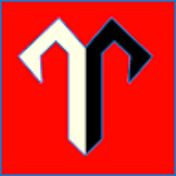Persian role in Seljuk Empire
26 May 2021
Persian role in the Seljukid empire is vastly overestimated. This bias began with the Western research back in the Oriental Institute during colonial times, which touched only the sedentary part of the state, mainly skipping the role of nomadic Turks.
As such, they started to claim that the conquest of Anatolia by Turks was the result of Seljuk sultans protecting their sedentary Muslim population. Because it was an Iranian empire of Turkic origin.
Such a sizeable negative view of Turks by Westerners is primarily related to the sources that they were using for it. Both Arabic and Persian scripts were differentiating the ruling dynasty and their kingship. While praising the role of Seljuks in the Islamic political scene, they were highly damaging to the nomadic Turks, often mentioning them as the plunderers of the cities.
The medieval sources, especially Persian ones, in neglecting the view of Turks, are criticized by Edmund Bosworth. He mentioned that writing Turkish titles and names in scripts is largely hard to read, as those people were not interested in them. As such, it is hard to differentiate the characters from titles of Turks.
Cambridge History of Iran also mentions it. That starts to criticize the “persianate” face of the state. Or the idea that Anatolia is a little Persia (It also goes against the thesis that Seljuks pushed Turkmens from Iran to Anatolia to avoid the sedentarization; why do Seljuks come to Anatolia themselves, bringing Persians then follow after Turkmens).
Seljuks, in fact, were not Persiniate as people think, as, for example, by 1100, the Tughril ibn MalikShah was still living in the tents, not in the cities. Their titles and institutions, such as Khatun or Atabeg, are still borrowed from the old Oghuz Yabgu state and used in the Seljuk Empire.
As a political power, Seljuks were using the Turkish nomadic emblem Tughra (a double head bird), which also shows that they were keeping their nomadic culture strongly.
Seljuk's political ideology was based mainly on the Nomadic tradition, not on the Iranian tradition. Unlike the Persian tradition, where it tends to have a single authority, nomads declare the power as the belonging of the clan, where the elder is ruling as the leader. This Nomadic tradition was still alive, as besides the significant branch of Seljuks, we also had several branches living in various areas (Seljuks of Rum, Seljuks of Syria, Seljuks of Iraq, Seljuks of Kerman).
The last of the Great Seljukids, Sultan Sanjar, also used this Turkmen tradition to legitimate his power over his young nephew Muhammad as the head of the Great Seljuks.
This concludes that the Seljuk Empire was an empire of Muslim dwellers and a nomadic empire.
Using the Tughra, Turkish titles in the state, and following Turkmens till Anatolia brings us to the role of nomads. Seljuks, for rising to power, were obligated to Oghuz-Turkmen nomads. As such, in the Seljuk empire, they played a unique role. Their role was also mentioned by Nizam al-Mulk in his Siyasat-name to remember the role of Turkmens and act with them with special care. It is also mentioned in the book dedicated to Sultan Sanjar by the grandson of Nizam al Mulk, as in the bachelor letters of Sanjar translated by David Durand.
With such a particular role that none of the other ethnic groups in the empire had, we can conclude that the empire was a Turkmen empire.
P.S. When Seljuks removed the special status of Turkmens by listening to their Ghulams and Persian viziers, Turkmens' status was revoked, which was the primary factor in the decline of the Seljuk empire.
